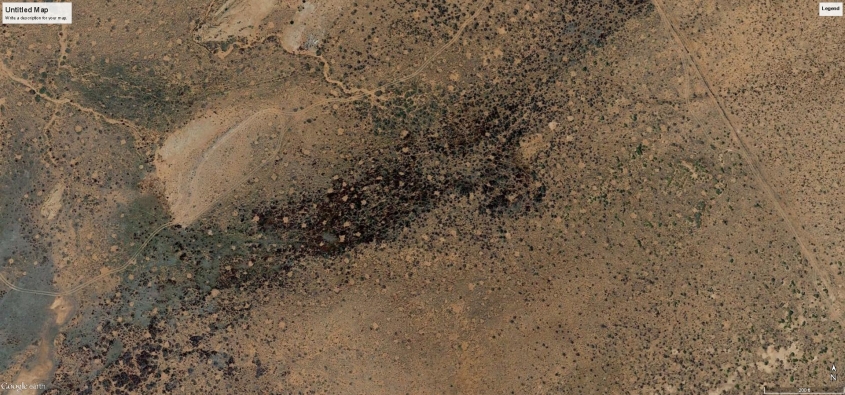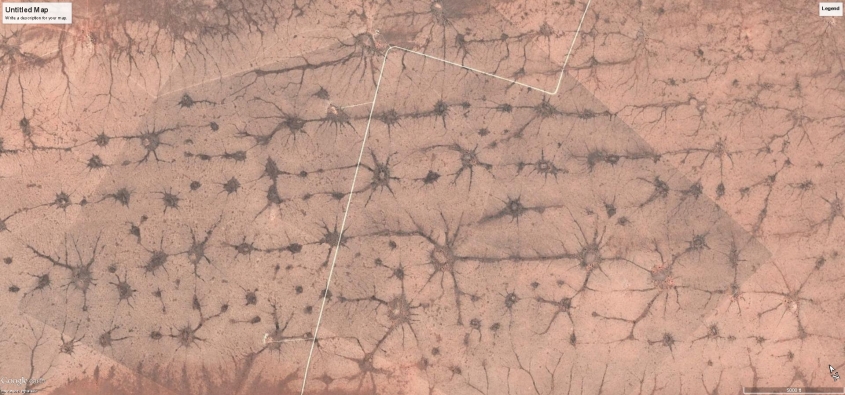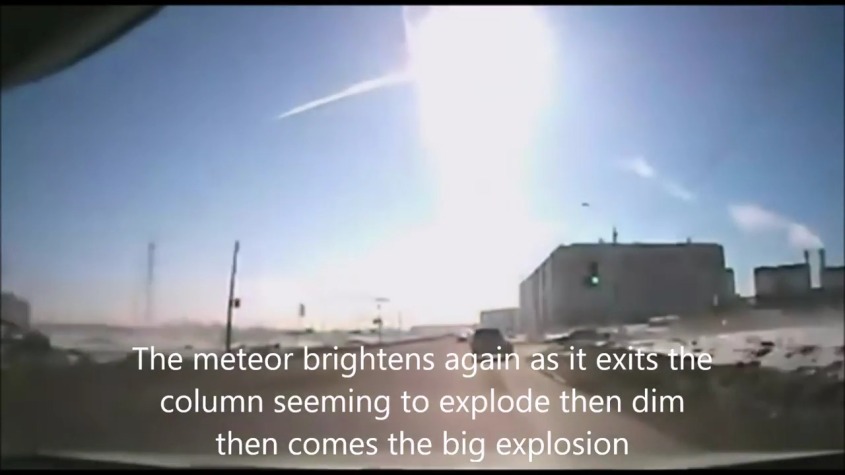Lightning…
The blue-white arc of a lightning bolt stuns the senses. Blinding radiance, elemental beauty, awesome power and primordial danger flash into existence from thin air, and vanish before the mind catches-up. We stare, immobile, unthinking and awestruck.
In that moment, a channel of air the diameter of a quarter heats fifty thousand degrees, as trillions of electrons cascade to Earth. The volume of air blows-up, radiating shock-waves to peel and boom across the sky.
Lightning also pummels the land, creating pressure waves exceeding seventy-thousand atmospheres – that’s one-million psi. It can create a layer of shocked quartz and vitrify surrounding rock into glass.
Lightning is an interaction between Earth and sky. It’s cause is an electric field between the electric storm above and the ground beneath our feet. ‘Ground’ is also a technical term, meaning the ambient voltage potential of the soil.
Earth is a negatively charged body in space, and current flows up from ground to atmosphere, normally in a drift of ions and electrons that is invisible. Storms reverse the current flow, causing electrons to avalanche back to Earth.
The Earth and sky are part of a circuit. Storms are capacitors in the circuit. They store energy in the form of ionic charge, and release it through dielectric breakdown of the atmosphere, causing lightning, among other effects.
 The ground is one plate of the capacitor where positive charge collects. As negative charge builds in the cloud, it is repulsed from the ground below, and positive ions are drawn in.
The ground is one plate of the capacitor where positive charge collects. As negative charge builds in the cloud, it is repulsed from the ground below, and positive ions are drawn in.
The ground reaches up with plasma tendrils. They collect especially around tall structures, pooling densely at sharp projections, surrounding them with a halo of charge the cascading electrons target for connection.
When connection is made, the arc touches Earth, spreading current in horizontal arcs across the surface as much as twenty meters away. This is a death zone. If you are in it, you are part of a 200,000 amp circuit.
The horizontal arcing is a side flash – a scatter of arc tendrils that follow surface conduction across the ground, radially away from the point of impact. The ground potential, type and shape of surface influences the character of the side flash.
Dry sand acquires charge very easily. Lightning attracts charged particles, and will sweep sand to it leaving a display of the entire strike zone. Sand in the strike zone, where current surges across the surface, pulls inward leaving a shallow crater with a cone of sand in the center. It’s like grabbing a bedspread in the center, pulling it up and dropping it in a pile.
The following photos were taken near Kayenta, Arizona on desert plains to the south of Comb Ridge.
The form is like an anthill, but these are not anthills. Ants dig rock from below ground and pile it outside the hole. These are built the opposite. The sand is swept-up from the surroundings, leaving a pile at the center of a crater. Besides, these don’t have ants, or ant-holes.

The mounds of sand are composed of fine, almost powder sand. But the tops of the mounds are dusted with pebbles. The pebbles are sand drawn into the lightning channel that fused and fell back to Earth when the flame extinguished, falling to cover the mound, like candy sprinkles on an ice cream cone.

Nothing grows inside the craters, or on the mounds. It’s as if the soil is sterilized. PH tests show the soil to be highly alkaline.
What meager growth there is are low, ground covering grasses and weeds around the perimeter of the craters.
 The desert in this region of Northern Arizona is carpeted with lightning strikes that left crater and mound features like these. The land is on the Colorado Plateau, just south of Monument Valley. They form what some call fairy rings when seen from the air.
The desert in this region of Northern Arizona is carpeted with lightning strikes that left crater and mound features like these. The land is on the Colorado Plateau, just south of Monument Valley. They form what some call fairy rings when seen from the air.
The next images show clusters of them. The craters vary in size from fifteen to thirty feet in diameter, or larger. The size of the central cone is proportionate to the size of the crater, ranging from about eight, to eighteen inches tall.


The strikes especially cluster where black rock crusts over the sand. The lightning seems to have punched through, scattering rock and leaving the craters bare, where nothing grows.


Whether the lightning is attracted to the rock, or the rock was made with the lightning isn’t known, but the rock provides a clue. It appears the lightning came in a coherent event that peppered the land, punching through and shattering the rock. That, at least, is how it appears.
What amazes is the number of them clustered in particular areas. They rarely overlap, spaced fairly even, but randomly apart. There are hundreds of thousands, if not millions of them scarring the land just south of Comb Ridge.


There are regions around the world where features like these carpet the land for hundreds of square miles. They are seen in desert lands especially, since there is little undergrowth to obscure them. The next image is from Namibia. Here the features connect with filaments of stream beds. But note how they connect in linear arrays, and branch radially like little stars. They are electrical discharge patterns.



Each feature seems to be a shallow basin, or spring where water collects. Map resolution doesn’t allow better detail. These features are larger than the Arizona features. Many cover several acres.
Much of the country of Uzbekistan is carpeted with similar features, as the following images from a small portion of eastern Uzbekistan show.




The Uzbekistan features are larger and more numerous still. They also appear to be shallow basins where the geology is distinctly changed, and there appears to be a source of water. In the last image, there appears to be a home, or ranch with a livestock tank, well, or catchment at the center.
It makes sense that water is found where lightning has struck. Subsurface water is a source of ionization that intensifies charge density, and therefore the electric field, attracting lightning to it’s location. Standing surface water won’t do that because ions have no point to collect – they spread evenly over the surface of the water. But subterranean water is trapped in the earth, where ions collect and build concentration, locally intensifying the electric field. Pits, craters and rilles formed by lightning leave depressions over aquifers that are natural for springs and wells.
Megaliths…
There have been times in the past when electric storms were far more severe than we experience today. That is one cornerstone of Electric Universe cosmology – that cataclysms in the past have an electrical cause due to events in the Solar System. Mythology records Thor’s Hammer, Neptune’s Trident and Zeus’ Thunderbolt, along with stories of the heavens in chaos.
To understand enigmas of the past requires first understanding what the environment was like. Are these carpets of lightning evidence of what the ancients experienced? And if so, is there other evidence besides stories from past epochs?
The only way to protect against a storm so intense is to get below Earth, or shelter beneath something that will serve as a lightning rod to route current to ground safely.
A lightning rod is a conductive path for current to reach Earth. It channels current to ground so it doesn’t spread out and reach you, and the things you want to protect. It provides a Faraday cage, or zone of protection, because it is more conductive the current flows through it instead of you.
So consider the function of standing stones. The megalithic stones erected thousands of years ago in circles and causeways. Or erected in dolmen formations with roof stones, as if refuge from demons. Never mind the mystery of how they were built with such gargantuan blocks of stone – that will be the subject of another post some day – but why were they built. That is the enigma we need to solve.
I believe they did it for protection, and we need to take heed of that.
They are usually made of granite. Granite is an excellent conductor, more robust than a metal rod. Granite is a blend of quarts and other silica crystals. Crystal is more than a passive conductor, it’s piezoelectric, so actively creates charged pathways for current to flow.
Standing stones and megaliths would glow with St. Elmo’s fire under intense electrical stress. They would send active plasma streamers to draw current from a sky turned electric, attracting lightning and connecting it to ground.

So, perhaps Dolmens, megaliths and standing stones actually were protection from demons in the sky. Perhaps this explains why megalithic structures are so closely fitted of giant stone to make positive contact everywhere. Maybe it’s why copper and bronze connectors were set between stones, not for structure, but for electrical continuity.
 If there is no low resistance path offered by a lightning protection system the high voltage current from a strike will divide to follow every conductive path to ground it can find. Currents will pass through materials normally considered insulators, instantly generating heat. Porous material can shatter violently as air inside expands with super sonic speed. Material containing moisture can explode more violently as water is flashed to steam. Other materials melt, or burst into flames.
If there is no low resistance path offered by a lightning protection system the high voltage current from a strike will divide to follow every conductive path to ground it can find. Currents will pass through materials normally considered insulators, instantly generating heat. Porous material can shatter violently as air inside expands with super sonic speed. Material containing moisture can explode more violently as water is flashed to steam. Other materials melt, or burst into flames.
Stone, and in particular granite, is well suited for the task of lightning rod. Seamless continuity would be the most critical factor in using them for that purpose.

That seems to be the case. Ancient megalithic structures are typically unadorned. Unlike temples, or tombs, they are not covered in symbolism, or art. They appear functional, purposeful, like something with industrial intent.
And they required the utmost care to construct, with tolerances that go far beyond cosmetic appearance. Walls and ramparts are often built of stones with beveled edges, perfectly fitted to prevent water from seeping into cracks. They were made that way to provide a current path, prevent side flashes from the walls, and to prevent water getting into cracks to cause arcing and blasts.
The close fitting of stone in jigsaw puzzle shapes isn’t really required for any other reason. It is believed they are constructed that way to withstand earthquakes. But why? To avoid death from an earthquake, one should stay away from standing stones in the first place. It makes far more sense the stones were constructed that way to protect from lightning.
Another clue may be a strange feature shared by megalithic structures around the world – knobs. Knobs are odd protrusions of rock on some megalithic stones.
It’s easy to understand how they got there. As stones were excavated from a quarry, they were left attached at the side, or bottom for support until rough shaping was complete. Then the attachment point would be broken to remove the stone, leaving a knob jutting out.
Companion knobs – the other side of the attachment point, can be found in the quarries. Unfinished works still have attachments in place, proving their original purpose.
Some also speculate the knobs were left in place to aid in lifting and maneuvering the stones. No doubt they provided an easy grip, or attachment point for a loop of rope, and were no doubt used that way. But for such master stone cutters, who fit stones so closely a knife blade can’t find a crease, it seems odd they would leave knobs jutting out of the finished work.
At the end of this article is a video from vlad9vt which shows photos of many megalithic sites and quarries which displays evidence of the knobs function as attachment points. Watch his film and you will see many examples, but finish the article first so you can judge my new theory.
It is curious to me why they were left on some stones, but not all stones. In some they have been ground away, and on others left protruding. Sometimes they protrude in seemingly random places, and sometimes in a pattern that might be considered decorative. They seem to be more prevalent around passageways and gates. They also seem to be on the lowest, or next to lowest course on stone walls; or the upper course, overhead, particularly in passageways.
I’m thinking they were left purposely to create side flashes, directing excess current away from the doors to flash harmlessly to ground without snaking through the passage itself. Or to divert side flash away from the foundation, or passage, to prevent current finding it’s way to occupied areas.
The Connection…
Megalithic structures were built in a time we only know through mythology. They were built to withstand the great wars of gods that legend tells of. They were built to withstand screaming winds, tidal waves and quaking earth. But electrical storms were the primary reason for megaliths. They carried current to ground from layers of electrified plasma pressing down against Earth.
Archaic storms would have been immense compared to a hurricane today. Caused by a Solar System awash in energy, the Earth responded with induced currents. The atmosphere stacked into layers of differing plasma properties, as dust, soil and water ionized on the ground. Giant currents connected Earth and sky to generate thunderstorms that evoked gods and demons.
Wooded areas would have erupted in firestorms. Volcanoes and earthquakes would have rattled the land. Winds would have screamed at Mach speeds, billowing smoke and ash to intensify arcing, like grain enclosed in an elevator. And lightning would have intensified, building in proportion to the electric field, creating currents that machine-gunned Earth in megaton blasts.
Atmospheric ionization was held at bay by standing stones migrating the flow of electricity through them. They acted like tent poles, holding back the lowering sky, the way mountains hold storms above a valley.
That’s why storms on the plains and low lying islands are so low to the ground, where the clouds seem just above tree-tops. There are no mountains to raise the ground voltage gradient high into the atmosphere to attract current, so the clouds close the gap by lowering closer to the ground.
Crops, stored grain, or animals sheltered beneath stones would have found protection from electrocution, and the winds and heat of the electrified plasma coursing above. Megaliths around the world show evidence of magnetic and electrical flux, charring and even vitrification. Many appear to have exploded.
 Where possible people would have taken refuge underground, hiding beneath cliffs, in caverns, or in shelters they dug.
Where possible people would have taken refuge underground, hiding beneath cliffs, in caverns, or in shelters they dug.
Stones and megaliths were set to protect precious lands, crops, water sources, food stores and huddles of animals they couldn’t take to the caves with them. They had to place them so there would be something to come back to – to carry on life after the storm.
They set them in fields and on hilltops, where they could work with the landscape to protect the area from obliteration. They provided a degree of refuge from storms bearing down with blistering peels of lightning and electric winds.
Or at least that’s what I think. Enjoy the video and resources below to learn more about lightning and megaliths. See if you discern a pattern to prove the purpose of the stones. See if you see what I see.
From vlad9vt
Lightning – it’s more powerful than you think…
- Lightning evidence mistaken for meteor impacts?… Science
- The Power… Space Daily
- The Danger…CBS News
- Ball Lightning…EE Times
- Mountain Buster Lightning…Nat Geo
- Rock Melting Lightning…Live Science
- Paleo-lightning and Petroglyphs…JSTOR
- From Petroglyphs to Mars…USRA
- “Lightning Caught on Camera”
- Peter Thompson lightning theory
- Lightning Research Index…University of Florida Electrical and Computer Engineering
- Volcanic Lightning… rare video from Barcroft TV
- Dangerously close… a great compilation of close calls.
Don’t forget the like button below! And please share with your friends.

Thanks!






























